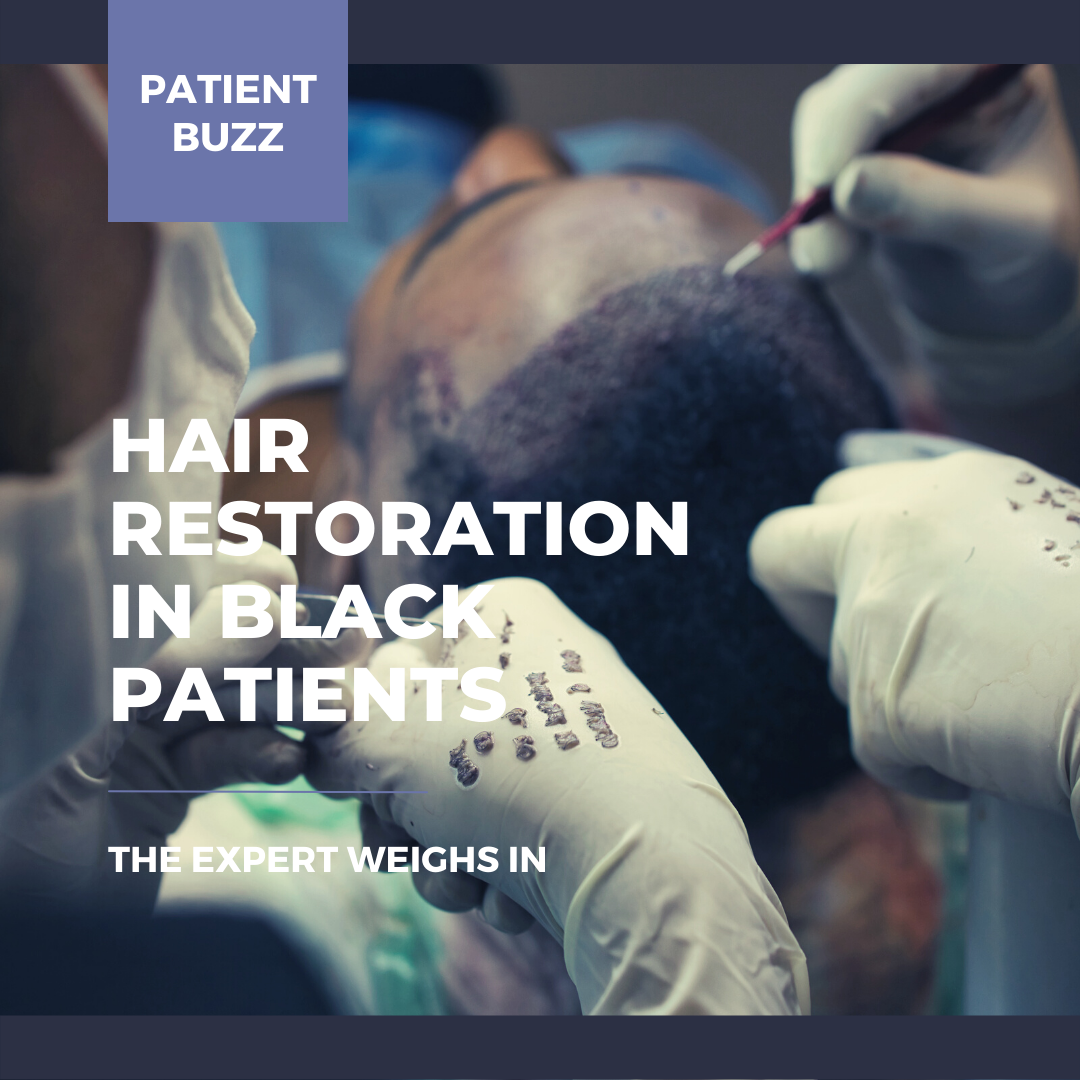Allure recently wrote an article about doctors who are making hair transplantation more accessible for Black patients. What are the unique challenges of hair restoration in Black patients, and which surgical and non-surgical approaches are most effective?
To answer questions about hair restoration, I reached out to Shilpi Khetarpal, MD, FAAD, director of cosmetic dermatology and lasers at the Cleveland Clinic. Dr. Khetarpal will present on alternative therapies for hair loss at Skin of Color Update 2022.
Some estimates show nearly half of Black women experience some form of hair loss. In what situations should a dermatologist recommend hair restoration treatments?
There are numerous times when hair restoration treatments can be considered. There are certainly hair conditions that are more common in African American patients like traction alopecia and central centrifugal cicatricial alopecia (CCCA). Traction alopecia occurs along the frontal hairline after years of wearing tight hair styles like ponytails or braids. Over time the hair thins and there is a gradual permanent loss of hair. Medical therapies like topical minoxidil can be tried, but if the results are minimal or unsatisfactory hair restoration can be considered.
CCCA is a type of scarring alopecia that is more common and almost exclusively in African Americans. The exact cause is not known but Is associated with a higher rate of metabolic syndrome and a history of ‘hot combing’ or chemical use. During the active, inflammatory phase medical therapies should be used, but after it is inactive or burnt out, hair restoration can be considered.
Other types of hair loss that are seen in all ethnic populations like androgenetic alopecia (AGA) can also be considered for hair restoration depending on how much hair loss is present.
What are the unique challenges of hair restoration in Black patients?
These patients have kinky, tightly curled hair so it is very different from other hair types. It takes someone with experience and practice. It can be difficult to keep curly hair from curling under the skin, which can then be accidentally cut when preparing the follicles for transplantation. The depth of the hair follicle can also vary, and if the hair continues to curl under the surface of the skin, it can be difficult to remove it without damaging it.
What are the pros and cons of hair transplantation in Black patients?
In certain situations, like traction alopecia, if the tight hair styles are not stopped, then it can affect the transplanted hair as well. For other conditions like AGA, if patients are not on medical therapy then the transplanted hair can be lost with time. Also, transplanted hair needs to be cared for carefully, and certain chemicals and procedures (like hot combing) can damage the hair, regardless of transplantation.
Are there types of hair transplantation that work best?
The manual strip technique or follicular unit extraction (FUE) are the most common types of hair transplantation. There are pros and cons to both types. The strip leaves a linear scar on the posterior scalp and FUE can leave the donor site looking ‘moth eaten’ or lacking hair. Ultimately it depends on the goals of the patient and what type of results they are trying to achieve.
How effective are non-surgical therapies, including PRP, stem cell therapy, microneedling and lasers, for restoring hair in Black patients?
These therapies can be effective for non-scarring alopecia. Depending on the extent of loss, medical therapies, PRP and microneedling can be effective at promoting new hair growth and increasing the diameter of existing hair. In my experience these results can generally improve hair density by 15-20% and have limited-to-minimal efficacy in inactive scarring alopecia. These treatments are less invasive than hair transplantation, however their results are also less, so it is important to discuss options with the patient.
Stem cell therapy is not FDA approved so I do not recommend it for patients.
Are there non-surgical therapies that appear to work best for certain types of hair loss?
Platelet rich plasma injections can be effective for early stages of AGA and traction alopecia when combined with medical therapies (minoxidil, anti-androgens, etc.). A combination approach is ideal as hair loss is multi factorial. From the literature we know that PRP with topical minoxidil is more effective than either therapy alone.
Home microneedling with topical minoxidil can also be effective in non-scarring alopecia and has shown to be superior to topical minoxidil alone.
What should all dermatologists know about hair restoration in Black patients?
It is very different than hair restoration in other patient types. It takes someone with a lot of skill and experience to successfully do hair restoration procedures in African American patients.
Did you enjoy this Patient Buzz Expert Commentary? You can find more here.

